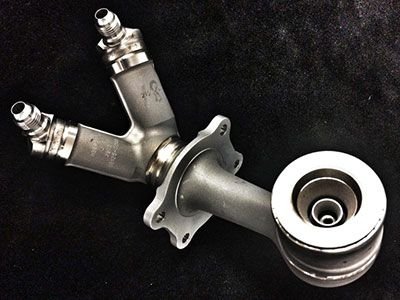Are additive or subtractive manufacturing methods best when producing complex parts?

Emerging technologies are having a dramatic effect on the manufacturing industry. One of the most important of these is additive manufacturing, often referred to as 3D printing.
3D printing allows for the production of parts with complexity that can’t be matched by traditional manufacturing methods. It can be used to produce impossible-to-machine features, like parts without seams or joints. Complex geometric or organic shapes are often only possible to produce using additive manufacturing methods, as is true for hollow parts.
Other advantages to additive manufacturing methods:
- A part can be produced in much less time using additive manufacturing than using the traditional subtractive manufacturing methods.
- The more complex (less solid) a part is, the faster and less expensive it is to produce.
- Anything that can be designed in a CAD program can be printed with additive manufacturing.
- Parts used for fit checks, presentation models and short-term use can best be made with additive manufacturing.
There are some drawbacks to additive manufacturing that, in some instances, make subtractive manufacturing the better choice. For example, when it comes to precision for common functional features, like flat faces, drilled and tapped holes, counterbores, and mating components, subtractive methods will generally produce results with the highest repeatablility and dimensional accuracy.
Other advantages to subtractive manufacturing methods:
- Subtractive manufacturing produces lower, more capable tolerances than additive manufacturing.
- Subtractive methods result in smoother surfaces than additive methods. Additive manufacturing creates micro-pores, which can lead to infection in medical uses and also add fatigue points that can lead to stress fractures with heavy loads.
- Parts intended for long-term use or high-stress use are best made with subtractive manufacturing.
- Medical and aerospace industries prefer subtractive for parts required to stay in the body for long periods of time and for flight-critical aerospace functions.
To learn more about the pros and cons of additive and subtractive manufacturing, download the free eBook, “Additive or Subtractive Prototyping: Which is Best?”
About the author: Doug Wetzel is Vice President and General Manager of Protomatic. Protomatic is a CNC precision machining shop specializing in prototype and short-run production components for the medical, aerospace and other technical industries. Because of the critical nature of the parts they design and manufacture, the emphasis is always on Life-Saving Precision.



